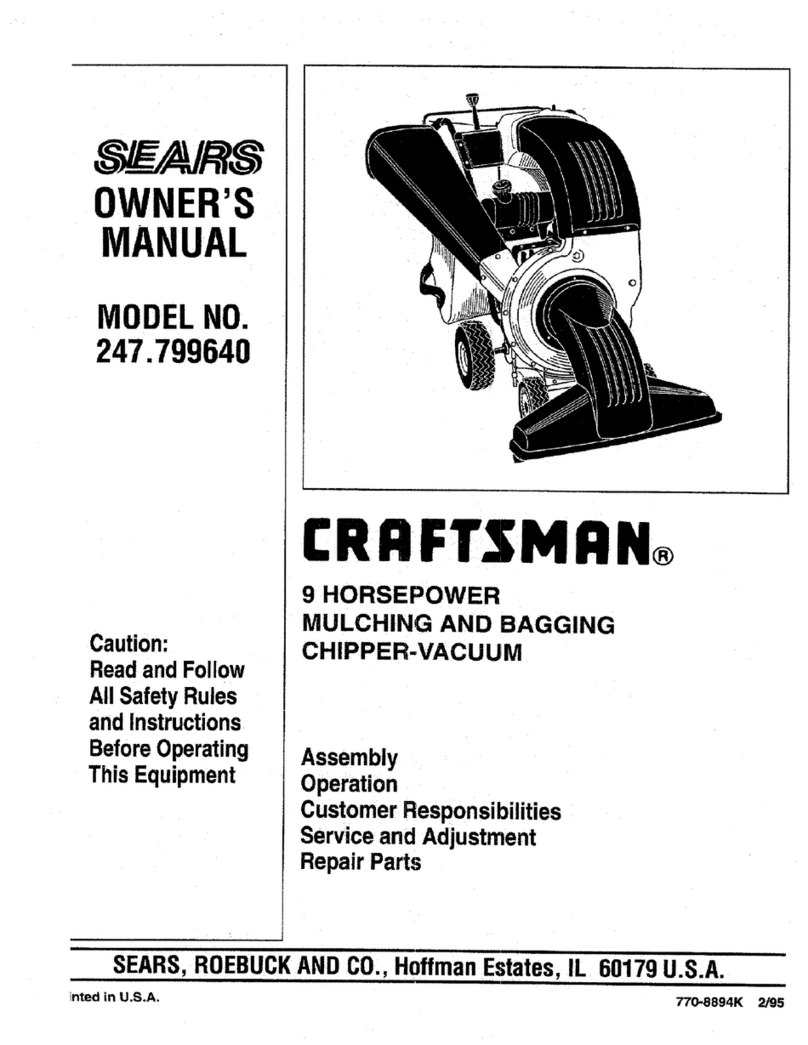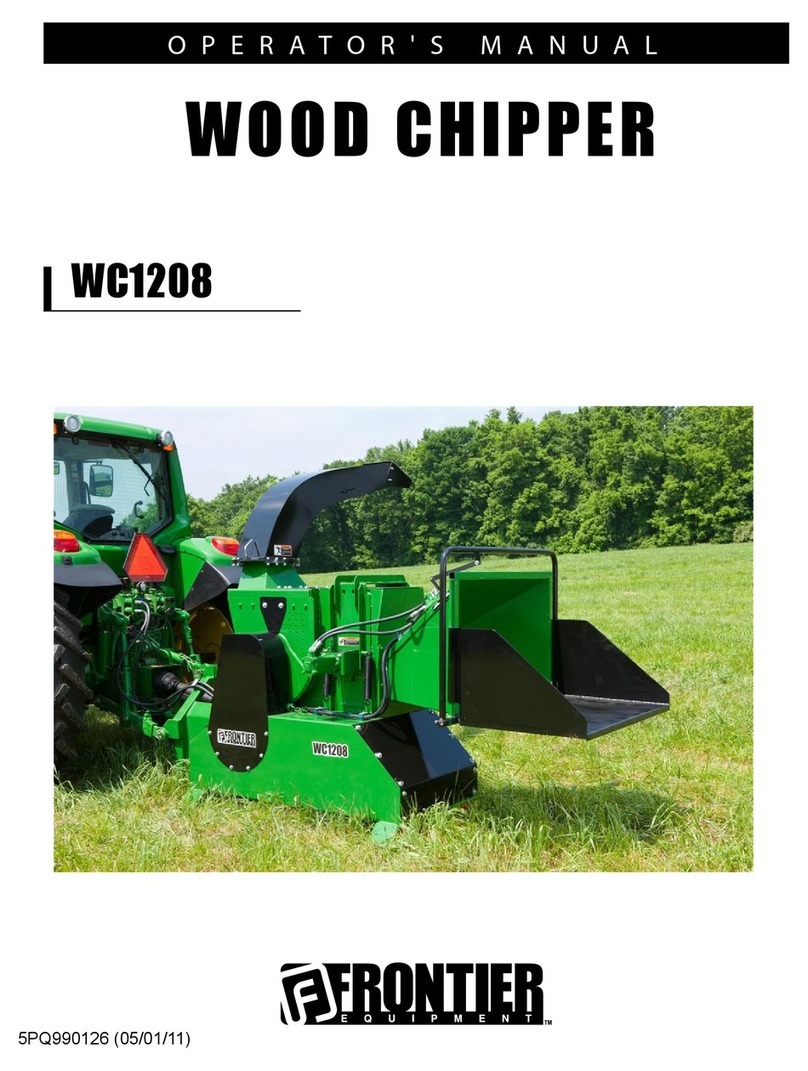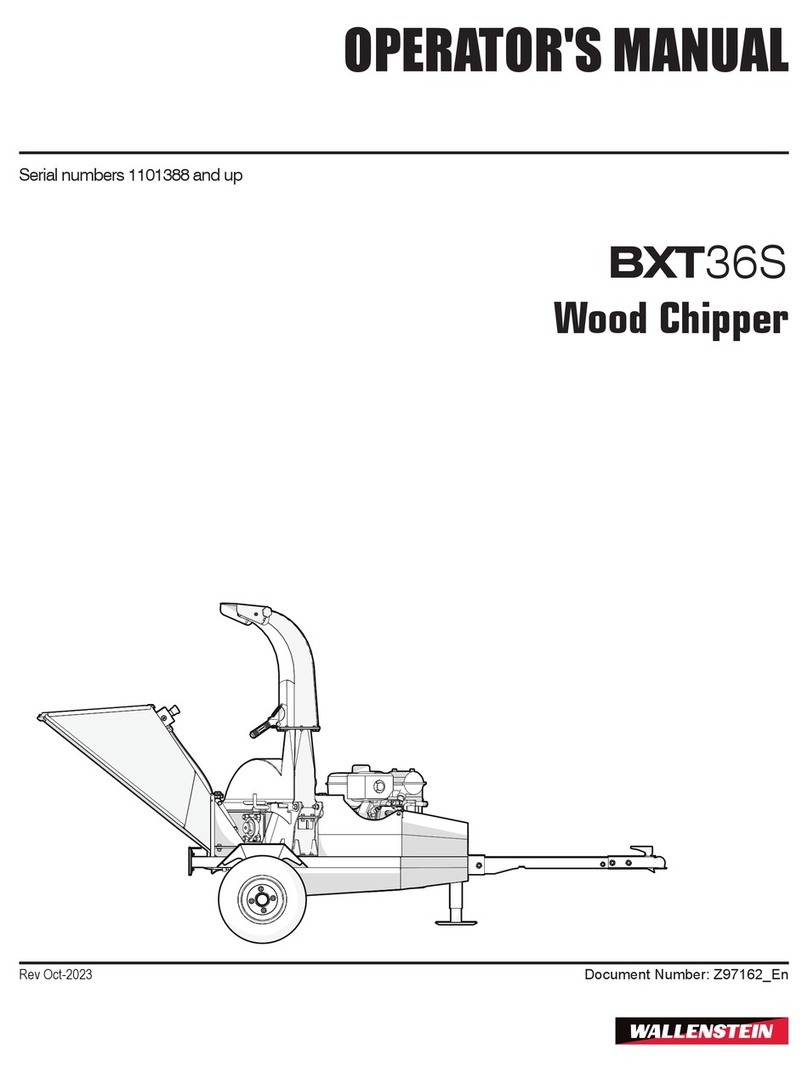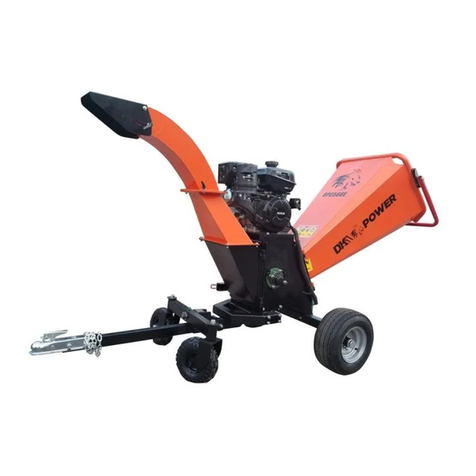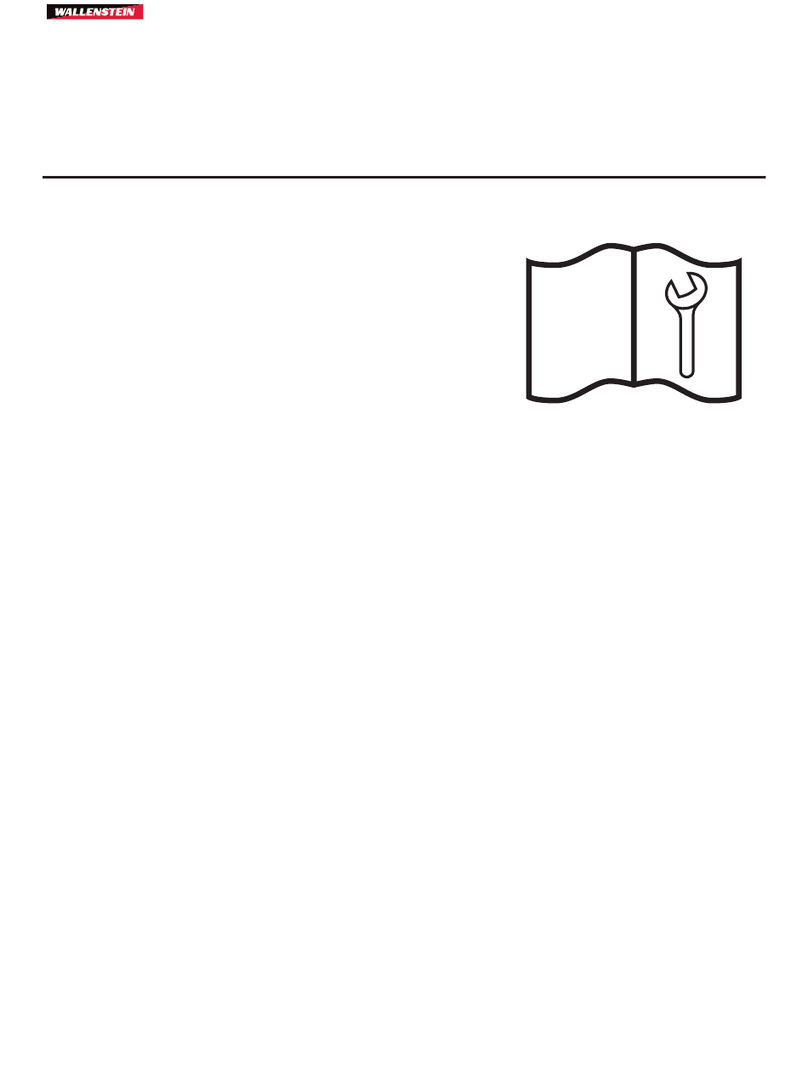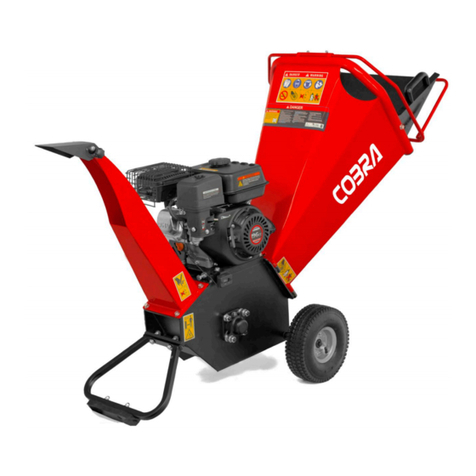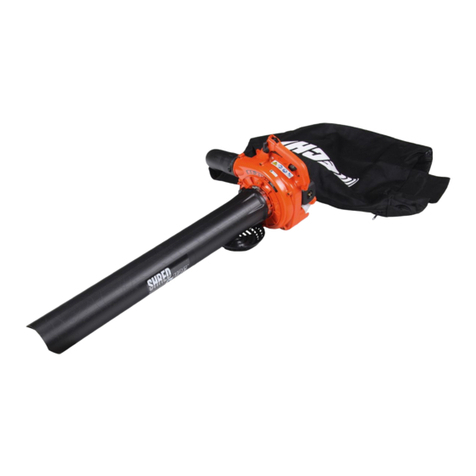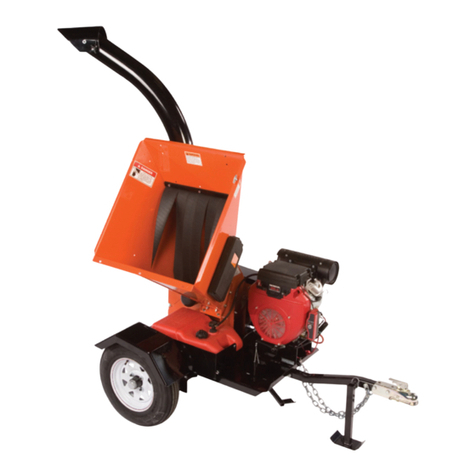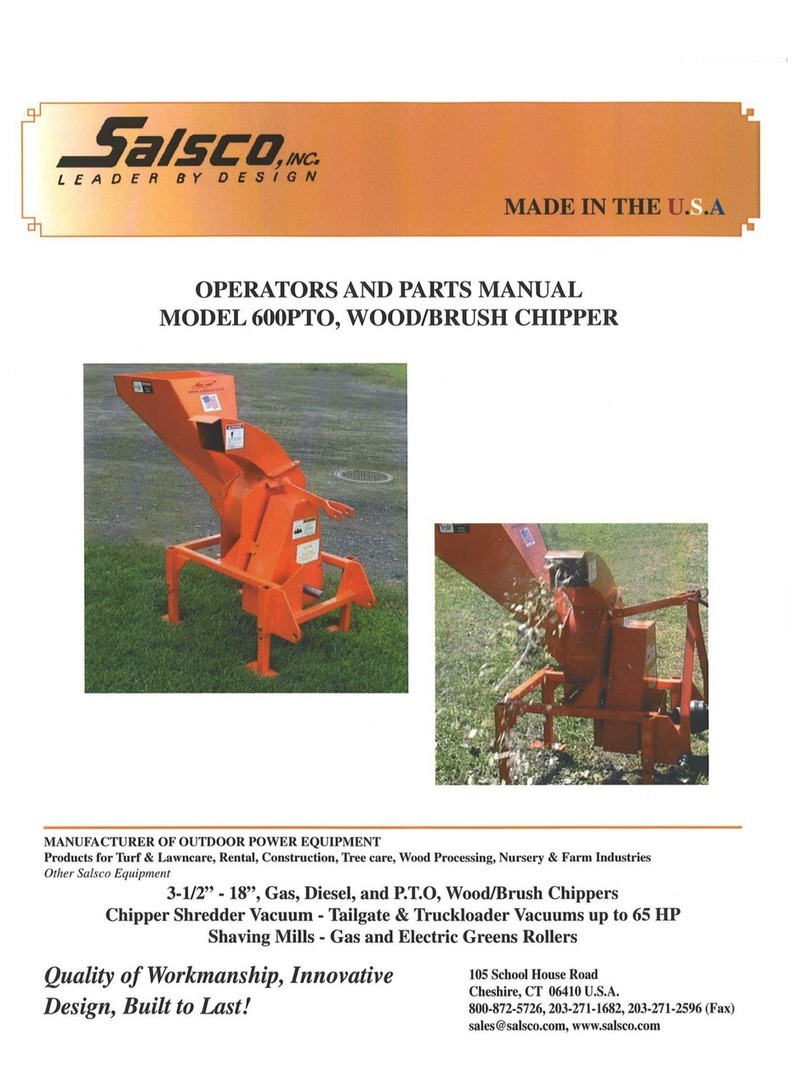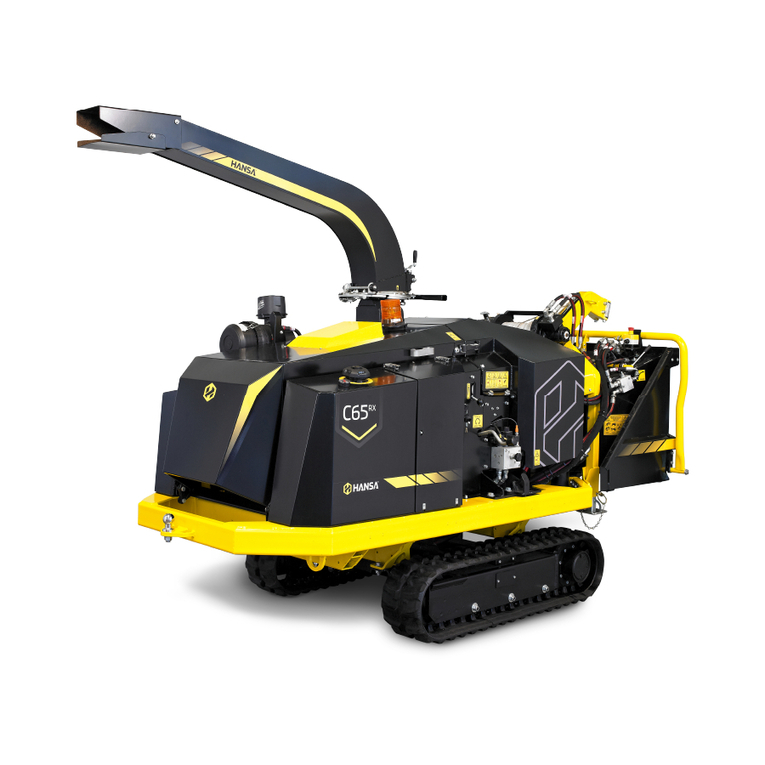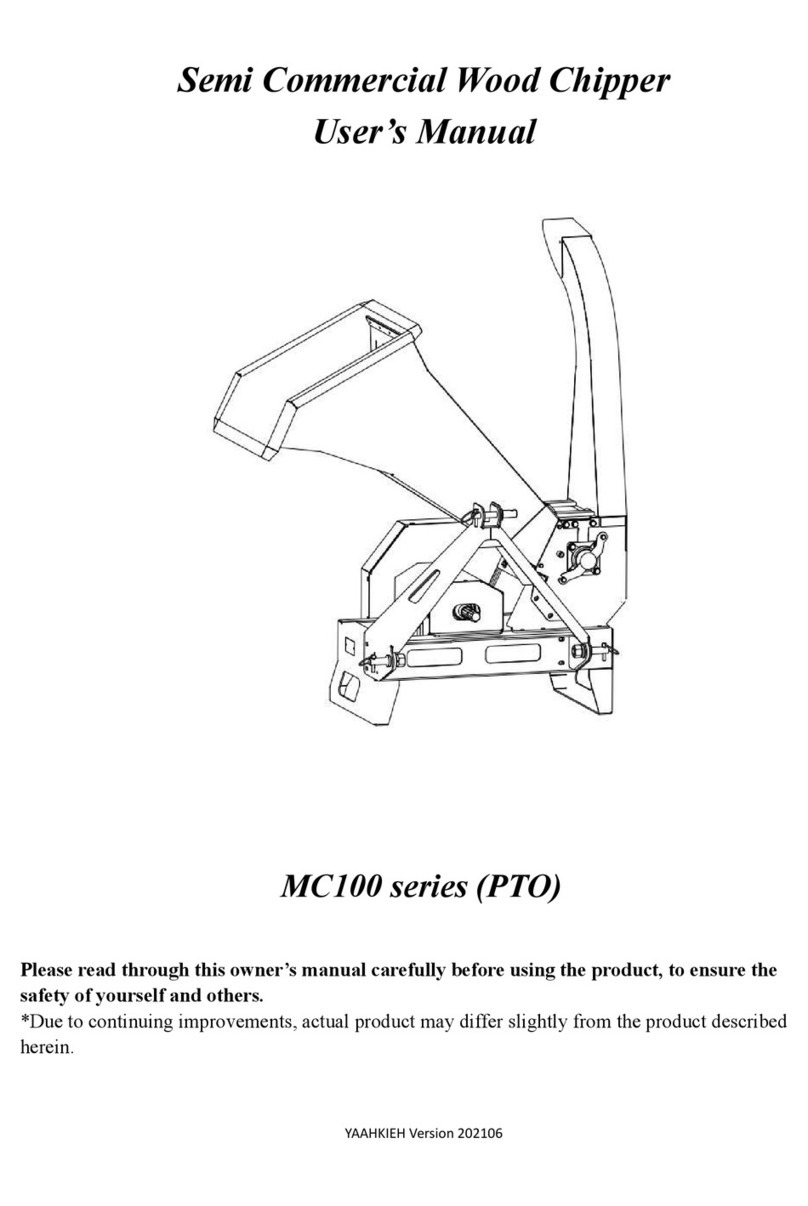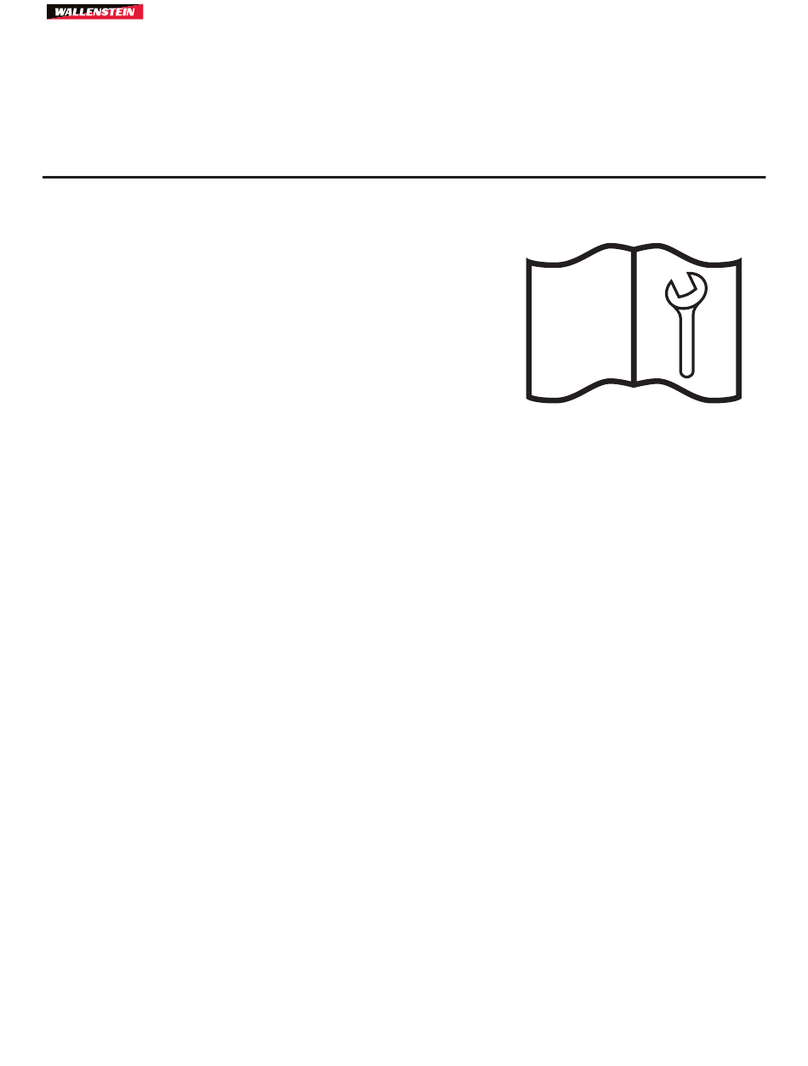Giant-Vac TLBC29202BVG Operation and maintenance manual

ASSEMBLYINSTRUCTIONS
OPERATOR’SMANUAL
PARTSLIST
29hpTruck
Loaderwith
Chipper
Actual product differs from product pictured above
Modelscovered:
TLBC29202BVG
Manual No. 3100026
R0808.1

1
preliminaries
Congratulations!
You have just purchased one of the finest pieces of outdoor power equipment on the market today. If properly
cared for, your new Giant-Vac truck loader will provide years of dependable service. Please read and follow
this instruction manual carefully in order to get the most out of your new equipment.
As you carefully uncrate your unit, you will find the following items:
1 Pallet containing:
1 Power Unit (with trailer frame and installed support jack and support leg if CHW unit)
1 Set of Fenders (CHW Units only)
1 Package containing taillamps and wiring harness
1 Package containing fender and wiring hardware
1 Hose/Parts Accessory Kit containing:
1 Discharge Stack
1 Discharge Elbow
1 8” dia. x 5’ Metal Discharge Hose
1 8” Squeeze Ring
1 10’ length of Intake Hose (10” dia. for 1601 units; 12” for 19-2501 units)
1 Intake Nozzle (10” for 1601 units; 12” for 19-2501 units)
1 Hose Support Band (10” for 1601 units; 12” for 19-2501 units)
1 Hose Support Boom Vertical Member
1 Hose Support Boom Horizontal Member
1 Support Boom Spring Guide with Spring and Spring Hardware installed
1 Package containing Assembly Hardware and two Hose Clamps (10” for 1601 units; 12”
for 19-2501 units)
1 Package containing operating manuals and warranty registration
Each product leaves our factory in excellent condition; occasionally, however, some damage may occur during
shipment. If any such damage is found upon initial inspection, immediately notify the transport carrier who
delivered your machine, as they are solely responsible for such damage, as well as any subsequent
adjustments necessary.
Before assembly, please take a moment and record your model number and serial number below for
future reference (both numbers are located on the silver tag adhered to the engine side of the impeller
housing assembly):
Model number_______________________________
Serial number________________________________
Also be sure to promptly fill out and return the warranty registration enclosed in your manual packet.
Your new loader requires very little assembly. Simply follow the instructions contained within this manual to
begin enjoying the benefits of your new unit.
CALIFORNIA PROPOSITION 65 WARNING
Gasoline and Diesel engine exhaust and some of its constituents are known to the State of California to cause cancer, birth defects and
other reproductive harm.
As an owner of off-road gasoline or diesel engine equipment and/or as an employer, you also may have an obligation under the
California Occupational Safety and Health Act or under Proposition 65 to warn persons exposed to gas and diesel engine exhaust
and/or other Proposition 65 chemicals in and around your workplace. See California Health and Safety Code section 25249.5, Title 22 of
the California Code of Regulations at Section 1200 er seq., and Title 8 of the California Code of Regulations Section 5194. R0603.1

2
safetyrulesregardingoutdoorpowerequipment
PLEASE READ THE FOLLOWING BEFORE ASSEMBLING OR OPERATING UNIT
TRAINING
• Read, understand, and follow all instructions in the
manual and on the unit before starting. If the
operator(s) or mechanic(s) can not read English it is
the owner’s responsibility to explain this material to
them.
• Become familiar with the safe operation of the
equipment, operator controls, and safety signs.
• All operators and mechanics should be trained.
The owner is responsible for training the users.
• Only allow responsible adults, who are familiar
with the instructions, to operate the unit.
• Never let children or untrained people operate or
service the equipment. Local regulations may
restrict the age of the operator.
• The owner/user can prevent and is responsible for
accidents or injuries occurring to themselves, other
people or property.
PREPARATION
• Evaluate the terrain to determine what
accessories and attachments are needed to
properly and safely perform the job. Use only
accessories and attachments approved by the
manufacturer.
• Wear appropriate clothing including safety shoes,
safety glasses and ear protection. Long hair, loose
clothing or jewelry may get tangled in moving parts.
• Inspect the area where the equipment is to be
used and remove rocks or any other such objects
which can damage the machine or the receiver box.
• Use extra care when handling gasoline and other
fuels. They are flammable and vapors are
explosive.
a) Use only an approved container.
b) Never remove fuel cap or add fuel with the
engine running. Allow engine to cool before
refueling. Do not smoke.
c) Never refuel or drain the machine indoors.
• Check that operator’s presence controls, safety
switches and shields are attached and functioning
properly. Do not operate unless they are functioning
properly.
OPERATION
• Never run an engine in an enclosed area.
• Operate only in the daylight or with good artificial
light, keeping away from holes and hidden hazards.
• Be sure all components are securely in place and
in good operating order before starting engine.
• Be sure of your footing while using equipment,
especially when backing up. Walk, don’t run.
• Do not operate the unit without discharge
connected to a debris receiver box.
• Slow down and use caution when making turns
and when changing directions on slopes.
• Never leave a running unit unattended. Always
stop engine, and remove keys before leaving unit.
• Never operate without guards securely in place.
Be sure all safety features are attached, adjusted
properly and functioning properly.
• Never operate with intake or discharge
components loose, removed or altered.
• Do not change the engine governor setting or over
speed the engine.
• Stop on level ground, shut off engine before
leaving the operator’s position for any reason
including emptying the receiver box or unclogging
the intake or discharge.
• Stop equipment and inspect impeller blades after
picking up unusually large or hard objects or
abnormal vibration occurs. Make necessary repairs
before resuming operations.
• Keep hands and feet away from the intake and
discharge.
• Never carry passengers and keep pets and
bystanders away.
• Do not operate the unit while under the influence
of alcohol or drugs.
• Slow down and use caution when making turns
and crossing roads and sidewalks.
• Use care when hooking or unhooking the machine
to a towing vehicle.
• Use care when approaching blind corners, shrubs,
trees or other objects that may obscure vision.

2
safetyrulesregardingoutdoorpowerequipment(cont.)
SLOPE OPERATION
Slopes are a major factor related to loss-of-control
and tip-over accidents, which can result in severe
injury or death. All slopes require extra caution. If
you cannot back up the slope, or if you feel uneasy
on it, do not operate on it.
Do
• Remove obstacles such as rocks, tree limbs, etc.
• Watch for holes, ruts, or bumps. Uneven terrain
could overturn the unit. Tall grass can hide
obstacles.
• Use slow speed.
• Keep all movement on the slopes slow and
gradual. Do not make sudden changes in speed or
direction.
Do Not
• Do not start or stop on a slope. If tires lose
traction, stop the unit and proceed slowly straight
down the slope.
• Do not turn on slopes unless necessary, and then,
turn slowly and gradually downhill, if possible.
• Do not operate near drop-offs, ditches, or
embankments. The operator could lose footing or
balance or unit could suddenly turn over if a wheel
is over the edge of a cliff or ditch, or if an edge
caves in.
CHILDREN
Tragic accidents can occur if the operator is not
alert to the presence of children. Children are often
attracted to the unit and its activity. Never assume
that children will remain where you last saw them.
• Keep children out of the operating area and under
the watchful care of another responsible adult.
• Be alert and turn unit off if children enter the area.
• Before and during reverse operation, look behind
and down for small children.
• Never carry children. They may fall off and be
seriously injured or interfere with safe unit
operation.
• Never allow children to operate the unit.
• Use extra care when approaching blind corners,
shrubs, trees, or other objects that may obscure
vision.
EMISSIONS
• Engine exhaust from this product contains
chemicals known, in certain quantities, to cause
cancer, birth defects, or other reproductive harm.
• Look for the relevant Emissions Durability Period
and Air Index information on the engine emissions
label.
MAINTENANCE AND STORAGE
• Always observe safe refueling and fuel handling
practices when refueling the unit after
transportation or storage.
• Always follow the engine manual instructions for
storage preparations before storing the unit for both
short and long term periods.
• Always follow the engine manual instructions for
proper start-up procedures when returning the unit
to service.
• Never store the machine or fuel container inside
where there is an open flame, such as in a water
heater. Allow unit to cool before storing.
• Shut off fuel while storing or transporting. Do not
store fuel near flames or drain indoors.
• Keep all hardware, especially impeller bolt, tight
and keep all parts in good working condition.
Replace all worn or damaged decals.
• Never tamper with safety devices. Check their
proper operation regularly.
• Clean debris from units, drives, mufflers, and
engine to prevent fires. Clean up oil or fuel spillage.
• Stop and inspect the equipment if you strike an
object. Repair, if necessary, before restarting.
• Never make adjustments or repairs with the
engine running unless specified otherwise.
• Park machine on level ground. Never allow
untrained personnel to service machine.
• Use jack stands to support components when
required.
• Carefully release pressure from components with
stored energy. (e.g. springs)
• Check impeller on a regular basis for bent, worn
or cracked blades. Only replace impellers; never
straighten or weld them.
• Keep hands and feet away from moving parts.

2
safetyrulesregardingoutdoorpowerequipment(cont.)
• Belts and belt guard components are subject to
wear, damage, and deterioration, which could
expose moving parts or allow objects to be thrown.
Frequently check components and replace with
manufacturer’s recommended parts, when
necessary.
• Check operation of brake, tail and license lights
frequently. replace as required.
• Use only factory authorized replacement parts
when making repairs.
• Always comply with factory specifications on all
settings and adjustments.
• Only authorized service locations should be
utilized for major service and repair requirements.
• Never attempt to make major repairs on this unit
unless you have been properly trained. Improper
service procedures can result in hazardous
operation, equipment damage and voiding of
manufacturer’s warranty.
3
unitassembly&set-up
Note: Please refer to Parts List for correct part identification and placement. Parts list reference
numbers are called out by sheet number followed by reference number(s) on that sheet: (1:1) indicates
Sheet 1, reference number 1; (2:32,34-38) indicates Sheet 2, reference numbers 32 through 38 excluding
33; etc.
FENDER ASSEMBLY (CHW UNITS ONLY)
•Insert one 3/8-16 x 1” bolt, fitted with one 3/8”
flat washer, out through the three fender
mounting holes (two located in the diagonal
brace, one in the support leg channel).
•Attach fenders to sides of base, making sure
taillamp mounting brackets are toward rear of
unit as shown.
•Secure each fender with flat washers, 3/8” split
lock washers, and 3/8-16 hex nuts. Tighten
securely.
•Install one Taillamp assembly into the taillamp
mounting bracket of each fender, first by
inserting the rubber grommet into the bracket
hole, then pressing the taillamp firmly into the
grommet. (Taillamp wiring will be addressed
later.)
Table of contents
Other Giant-Vac Chipper manuals

